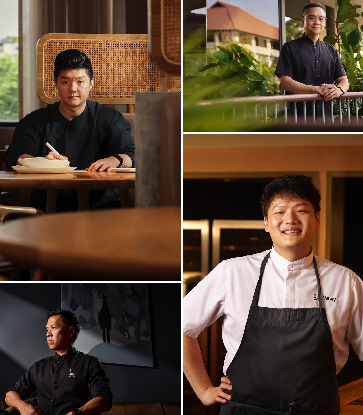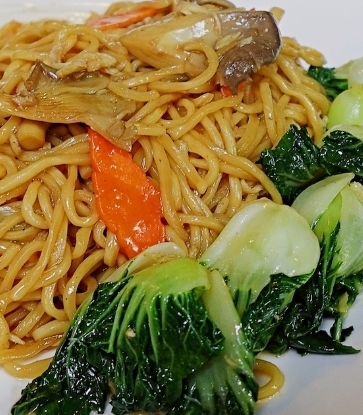
Mok told us traditional Cantonese cuisine is a sinking ship in South-east Asia. From prepping to all the work on the stove, cooking Cantonese food the old way is manpower-, time- and capital-intensive, and restaurants are moving away from it.

First up, deep-fried whole boneless chicken filled with fried glutinous rice. Unlike the lo mai gai you would find in dim sum restaurants, this Cantonese classic has glutinous rice (stir-fried from raw), dried scallop, dried shrimp, various cured meats and dried shiitake mushroom stuffed in the cavity of a deboned chicken. After a hot water bath, the stuffed chicken is brushed with a marinade that would caramelise its skin after cooking and air-dried for four hours. It is then roasted and deep-fried before it’s served. It’s a painstaking procedure and the step of air-drying is especially challenging, as it could affect the crispiness of the chicken. The cooks would need to use every bit of technique and patience they have to make it work.

The second dish Mok introduced is sautéed fresh milk, crab meat and egg white accompanied with deep-fried pork rolls with preserved bean curd. The two components — sautéed fresh milk and deep-fried pork rolls — both originate from the town of Shunde and Mok believes they taste better when served together. While the dish name reads “wild chicken rolls” in Chinese, it is traditionally cooked with pork, a more common choice of meat back in the days when chicken was eaten only in festivals.

The rolls reveal the knife skill of the cook — the pork needs to be first thinly sliced and marinated. It is then made into rolls, steamed, refrigerated and finally deep-fried. At the end, the sautéed fresh milk is placed on top. This part puts the cook’s control over the fire to the test. The milk will not solidify if the heat is too low, but if the heat is excessive, it will burn.
Finally, in the dish of sautéed boneless chicken wings with abalone and mushroom, fresh chicken wings are deboned and stuffed with abalone, Chinese cured ham and shiitake mushroom. They are pan-fried and braised to showcase the aroma of the chicken meat and the abalone’s umami. The most difficult step is to keep the chicken skin intact while cooking.
























